Learn how to make thin sushi rolls at home with my Maki Sushi (Hosomaki) recipe. I‘ll show you how to add a single filling like sashimi-grade tuna or cucumber and roll it in nori sheets and sushi rice. Enjoy these delicious bites at your next party, picnic, or potluck.
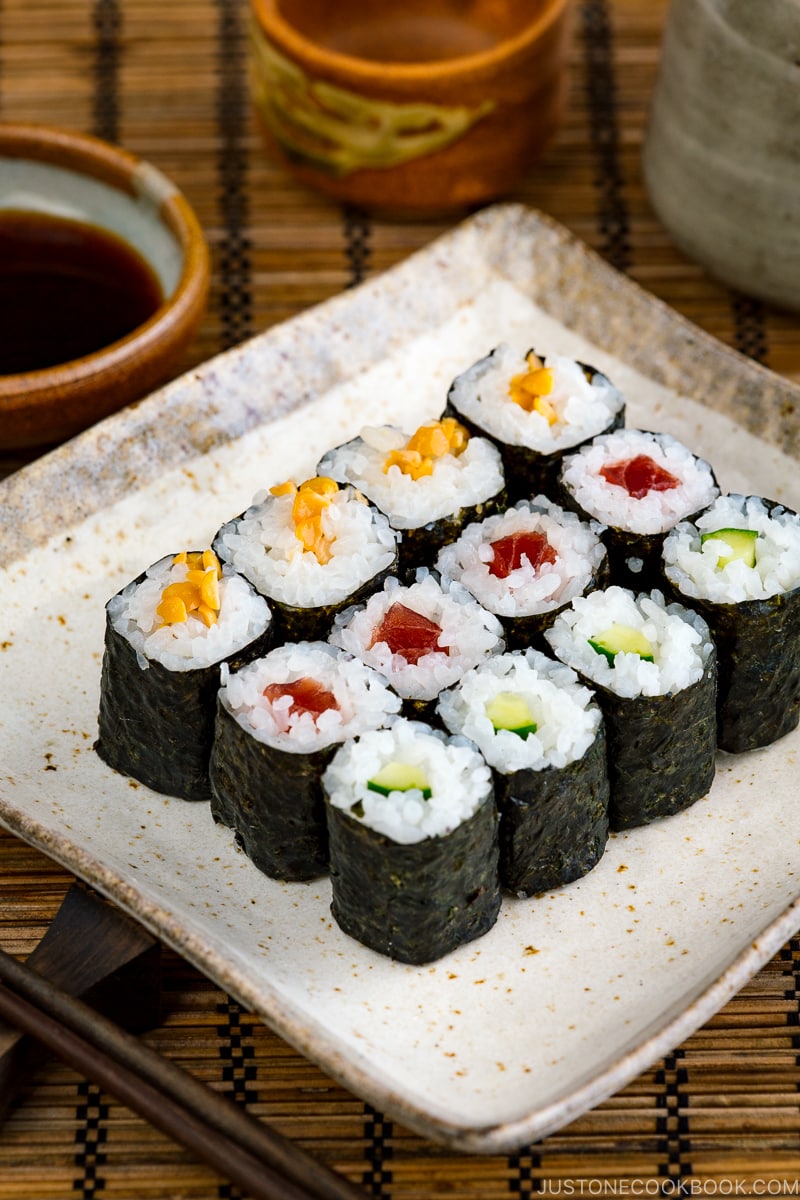
For today’s recipe, I’ll show you how to make the best known and popular Japanese food, Sushi Rolls or Maki Sushi (巻き寿司)! Even though you might not have tried making sushi at home before, don’t worry. I will explain in detail with lots of good tips and advice as well as the video tutorial and step-by-step pictures on how to make these delicious rolls at home!
You can put different ingredients inside but for today, we’ll be making tuna rolls, cucumber rolls, and natto rolls.
Table of Contents
What are Sushi Rolls?
First of all, what’s sushi? Sushi is any dish made with vinegared rice (we call it “Sushi Rice“) combined with other ingredients like seafood and vegetables. Some people think sushi means raw fish, but that’s not entirely true. You can have sushi with or without raw fish. There are various types of sushi, and you can find variations here.
When the sushi rice is wrapped in nori seaweed and rolled, it is a sushi roll. In Japan, we call it makizushi or maki sushi (巻き寿司). There are several types of sushi rolls:
- Hosomaki (細巻き) – Thin rolls (1 inch in diameter) with nori on the outside, containing 1 ingredient
- Chumaki (中巻き) – Medium rolls (1–1.5 inches in diameter) with nori on outside, containing 2–3 ingredients
- Futomaki (太巻き) – Thick rolls (2–2.5 inches in diameter) with nori on the outside, containing 4–5 ingredients
- Uramaki (裏巻き) – “Inside-out” rolls with nori on the inside, like California Roll
- Temaki (手巻き) – Cone-shaped sushi hand rolls

Varieties of Sushi Rolls
1. Traditional Edo-style Sushi Rolls
These sushi rolls are hosomaki which consists of one main ingredient and is usually wrapped with nori on the outside. How many of these do you know or tried before?
- tuna roll (tekka maki) – today’s recipe
- cucumber roll (kappa maki) – today’s recipe
- fermented soybean roll (natto maki) – today’s recipe
- dried gourd roll (kanpyo maki)
- pickled daikon roll (shiko maki)
- pickled plum & cucumber roll (umekyu)
- eel/sea eel & cucumber roll (unakyu or anakyu maki)
- tuna & scallion roll (negitoro maki)
- yellowtail & scallion roll (negihama maki)
2. Western-style Sushi Rolls
These sushi rolls consist of multiple ingredients and most of them are inside-out rolls (uramaki). A lot of restaurants create their own version of combinations and unique names, but here are some common ones.
- California roll
- dragon roll
- spicy tuna roll
- rainbow roll
- caterpillar roll
- Alaska roll
- Boston roll
- Philadelphia roll
- dynamite roll
- spider roll

Ingredients and Equipment for Sushi Rolls
First, you need to prepare four key items to make sushi rolls: Sushi rice, the fillings of your choice, nori sheets, and a bamboo sushi mat.
1. Sushi Rice
One of the important ingredients to make sushi rolls is to have the right sushi rice. To cook the rice, you’ll need uncooked Japanese short-grain white rice, water, and kombu (dried kelp). To season the cooked rice, you’ll need rice vinegar, sugar, and Diamond Crystal kosher salt as described in my Sushi Rice recipe.
2. The Fillings
Today, we’ll make single-filling rolls with tuna, cucumber, or natto. Tuna and cucumber rolls are the most popular hosomaki and you have probably seen or eaten these at Japanese restaurants.
Traditionally, the fillings for hosomaki are either (raw or cooked) seafood or vegetables. However, if you don’t eat raw fish, you can use other ingredients you like. Experiment with what food works for your preference. Here are some ideas:
- Vegetable and fruit filling ideas: The traditional Japanese fillings include julienned cucumber, pickled daikon, dried gourd, bell pepper, or radish. You can use non-traditional Japanese ingredients such as avocado or mango, if you’d like.
- Sushi with raw fish: Sushi-grade salmon or tuna. See below for where to buy sushi-grade seafood.
- Sushi without raw fish: Imitation crab sticks, cooked crab meat, canned tuna with spicy mayo, smoked salmon, smoked mackerel, or natto (fermented soybean).
3. Nori Sheet (Roasted Seaweed)
There are many types of “seaweed” used in Japanese cooking, and for making sushi rolls, we need dried laver seaweed called nori (海苔). They are roasted and look like sheets of paper. We use a half sheet of nori for this recipe but depending on the type of roll, we use half, 3/4, or a whole sheet of nori.
Please remember that nori gets stale easily. Therefore, once you open the package, store in an airtight container or a plastic bag (remove the air before closing) and keep in the refrigerator.
4. Bamboo Sushi Rolling Mat
A bamboo sushi mat or makisu (巻き簾) is made of bamboo and used to make sushi rolls and egg omelette like Tamagoyaki and Datemaki.
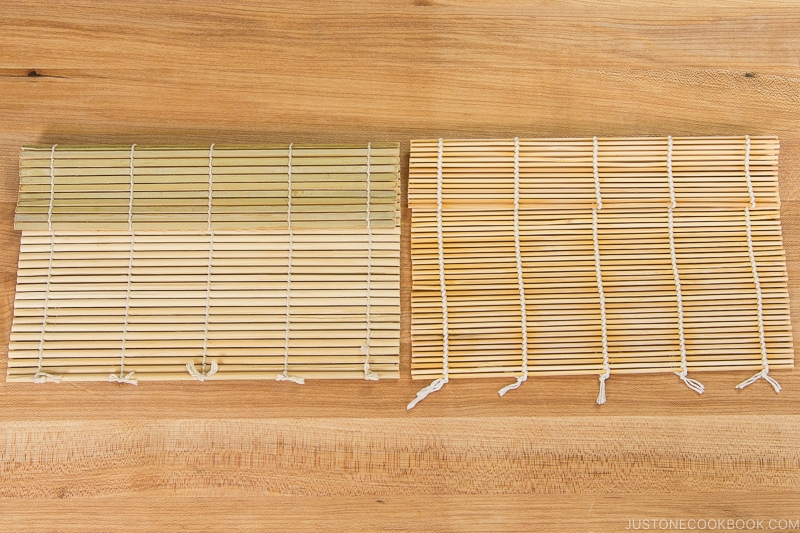
The left sushi mat has a round and flat (green) side and each bamboo strip is wider and bigger round shape. The right sushi mat has narrower round bamboo strips with no flat side. For today’s sushi roll recipe, I highly recommend the sushi mat on the right because it is more flexible when you shape the sushi roll.
I found this cool sushi kit, a set of sushi oke (also called hangiri), a bamboo mat, and rice paddles from Amazon! If you have a sushi party often, this is a must!
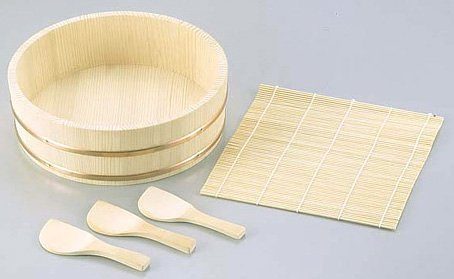
If you don’t want to purchase a bamboo mat, you can use a thick, hard texture kitchen towel folded into a similar size as a bamboo sushi mat, or use a placemat similar to the bamboo mat.
How To Make Sushi Rolls
Traditional sushi rolls called hosomaki are much easier to roll than thick, fancy, Western-style sushi rolls. Consider today’s recipe as a practice run before you move on to bigger sushi rolls like California rolls and dragon rolls.
- Follow my Sushi rice recipe to cook the rice and season it with a mixture of rice vinegar, sugar, and kosher salt. Cover with a damp cloth at all times to prevent drying.
- Prepare the fillings. Cut the cucumber and tuna lengthwise into long strips. Season the natto (fermented soybean) with soy sauce or the natto seasoning packet. Stir several times.
- Make the tezu (finger-dipping vinegar water) with water and rice vinegar.
- Prepare the nori (dried laver seaweed). Cut the longer side of the nori sheet in half and store in an airtight bag until ready to use.
- Place the sushi mat on the work surface so the bamboo slats run sideways (horizontally). Place a nori half sheet shiny side down on the mat.
- Moisten your hand with tezu, then scoop the sushi rice into your hand. Spread the rice evenly on the nori with both fingers, keeping a 1-inch space across the top.
- Add one filling of your choice (tuna, cucumber, or natto) across the middle of the rice. Hold the filling down using your fingers.
- Roll the nori and rice over the filling with one swift movement. Gently shape and tighten the roll from outside the mat. Move the roll to a tray and keep it covered with a damp cloth/plastic wrap to prevent drying. Make the rest of the rolls.
How To Cut and Serve a Sushi Roll
- Wet your knife with a damp towel and cut the roll in half.
- “Push, then pull” the knife while cutting through the roll.
- Wet the knife again and cut each half roll into 3 pieces.
- Serve with soy sauce, wasabi, and sushi ginger (gari). Enjoy!
Where to Buy Sushi-grade Fish (Sashimi)
You can find sushi-grade fish in the sashimi section of your local Japanese grocery store.
If you live in San Francisco, you can place an order from TrueFish for local delivery or pickup. I go to Suruki Supermarket in San Mateo for sashimi. They usually take orders in advance via email. If you are using it for hand rolls, ask for the hand roll cut (a stick shape rather than sashimi style).
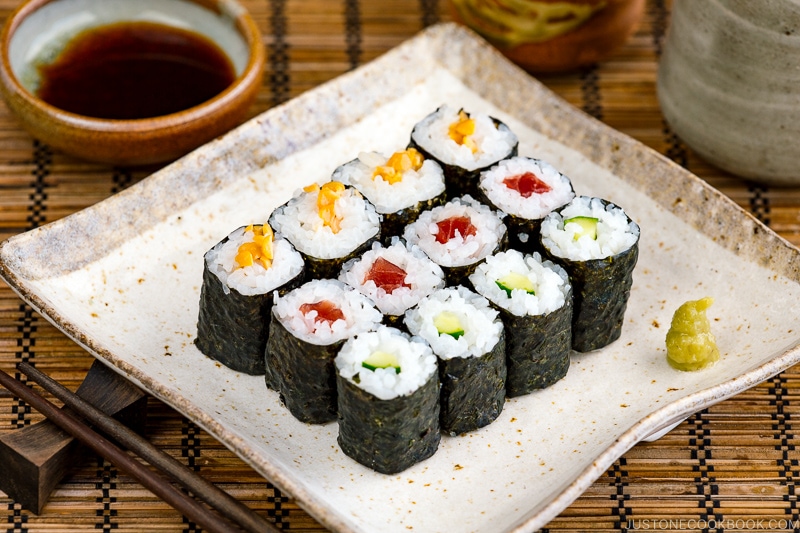
More Sushi Recipes You’ll Love
Also, check out our Ultimate Sushi Guide: Sushi Types, Recipes & Etiquette.
Wish to learn more about Japanese cooking? Sign up for our free newsletter to receive cooking tips & recipe updates! And stay in touch with me on Facebook, Pinterest, YouTube, and Instagram.
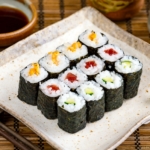
Sushi Rolls (Maki Sushi – Hosomaki)
Video
Ingredients
For the Sushi Rice
- 2¼ cups uncooked Japanese short-grain white rice (3 rice cooker cups, 450 g; cook the rice ahead of time using my Sushi Rice recipe)
- 2¼ cups water (for cooking the rice)
- 1 piece kombu (dried kelp) (5 g; 2 x 2 inches or 5 x 5 cm; for cooking the rice; optional, but it gives a nice aroma!)
- ⅓ cup rice vinegar (unseasoned) (if you substitute seasoned bottled sushi vinegar, skip the sugar and salt)
- 3 Tbsp sugar (skip if using bottled sushi vinegar)
- 1½ tsp Diamond Crystal kosher salt (skip if using bottled sushi vinegar)
For the Nori and the Filling Options
- 5 sheets nori (dried laver seaweed)
- 1 Japanese or Persian cucumber (yields 8 rolls)
- 7 oz sashimi-grade tuna (block; yields 12 rolls)
- 1 box natto (fermented soybean) (yields 2 rolls)
For the Tezu (Finger Dipping Water)
- ¼ cup water
- 2 tsp rice vinegar (unseasoned)
For Serving
- soy sauce
- wasabi (optional)
- sushi ginger (gari) (optional; you can make my homemade Sushi Ginger)
Instructions
- Gather all the ingredients. Please cook the rice ahead of time following my Sushi Rice recipe. The cook time varies depending on the device/method you use. You will need a bamboo sushi mat.
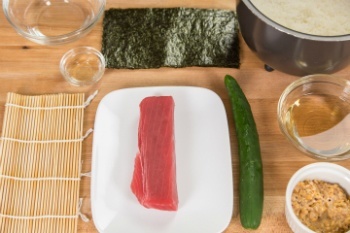
To Prepare the Sushi Rice
- Use 2¼ cups uncooked Japanese short-grain white rice, 2¼ cups water, and 1 piece kombu (dried kelp) to cook the rice. This yields 6⅔ cups of cooked rice, enough for 10 hosomaki or thin sushi rolls. Please follow my Sushi Rice recipe for step-by-step instructions on how to cook the rice.
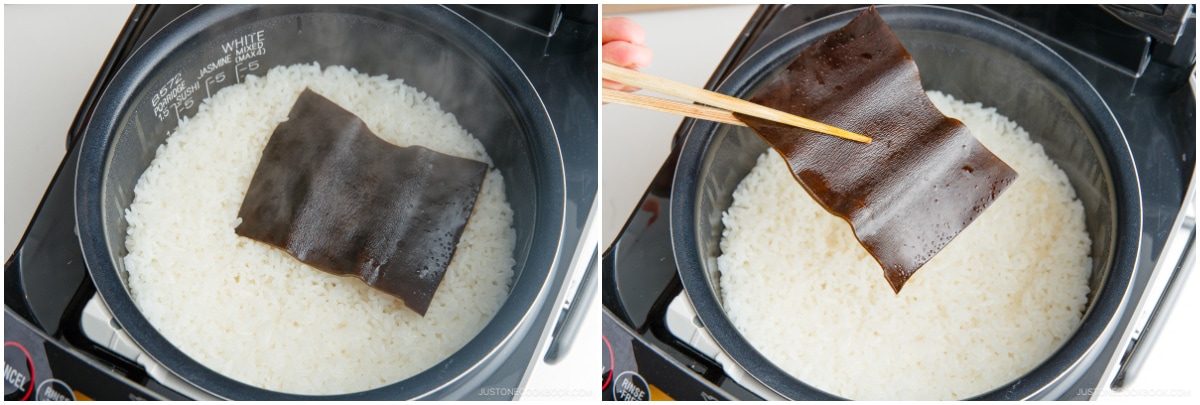
- Use ⅓ cup rice vinegar (unseasoned), 3 Tbsp sugar, and 1½ tsp Diamond Crystal kosher salt to season the cooked rice as described in my Sushi Rice recipe. Cover the sushi rice with a damp cloth/plastic wrap at all times to prevent drying.
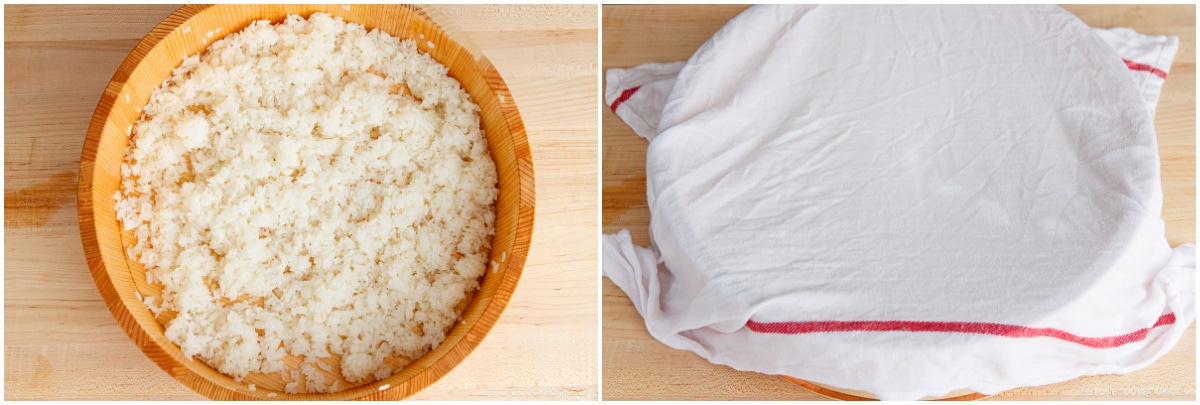
To Prepare the Filling Options, Tezu, and Nori
- Cut both ends of 1 Japanese or Persian cucumber. Cut in half lengthwise, then cut the halves again lengthwise so you now have 4 strips. Remove the seeds with your knife. Then, cut each strip in half lengthwise yet again. You now have 8 strips.

- Cut the 7 oz sashimi-grade tuna block lengthwise into ¼- to ½-inch slabs. Then, cut the slabs lengthwise into long strips ¼- to ½-inch thick.

- Remove the natto from 1 box natto (fermented soybean) and place in a small bowl. Season with the packet of soy sauce or seasoning that came with the package. Mix everything up and stir several times until it’s slimy and bubbly.

- Make finger-dipping vinegar water (tezu) by combining ¼ cup water and 2 tsp rice vinegar (unseasoned) in a small bowl. Apply this water to your fingers and hands to prevent the rice from sticking to them.

- Cut 5 sheets nori (dried laver seaweed) in half. Even though it may look it, nori sheets are not perfectly square; therefore, cut the longer side of the rectangle in half. Also, nori gets stale easily, so store the sheets in an airtight bag and take out each piece only when you‘re ready to use it.
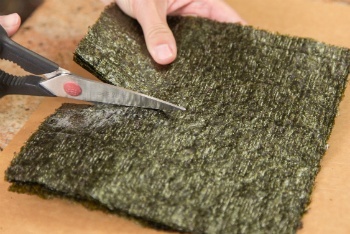
To Roll the Sushi
- Place the sushi mat on a work surface. The bamboo slats should run sideways (horizontally) so you can roll them up. On the mat, place a nori half sheet shiny side down, with its long side along the bottom edge of the mat (the side closest to you). Leave about 3–4 slats visible on the side nearest you.
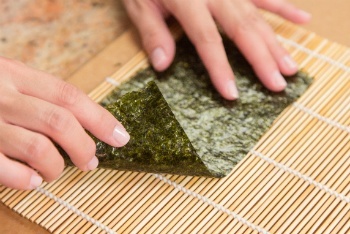
- Moisten your hand with tezu before you touch the sushi rice.

- Using a measuring cup, scoop ½ cup (80 g) of sushi rice into your hand. This way, you‘ll use the same the amount of rice for each roll and they will be the same size. You can wet the measuring cup with tezu so the rice won‘t stick. I know, this is not the “proper” way, but until you can grab a perfect amount of rice each time, this trick will do!

- Place the sushi rice on the nori, left of center. Leaving a 1-inch strip of nori along the top edge, spread the rice toward the right using your right fingers while you use your left fingers to keep the rice away from the 1-inch nori strip on top.

- Spread the rice evenly with both fingers, still keeping the 1-inch space on the top. Wet your fingers in dipping water if the rice starts to stick.

- Place a single filling of your choice (tuna, cucumber, or natto) in the middle of the rice across the entire length of the roll. If your tuna or cucumber is too short, add extra pieces on the end. Hold the filling down using your fingers.

- Lift up the bottom edge of the sushi mat with your thumbs. With one swift movement, roll the nori and rice over the filling. Land right at the top edge of the rice. You should still see the 1-inch nori space.

- Leaving the sushi mat in place, gently shape and tighten the roll with your fingers from outside of the mat. Shape the roll to give it square sides (or keep it round). Finally, lift the sushi mat and rotate the roll once to seal the top edge of nori. Gently squeeze and tighten the roll again through the mat. Your sushi roll is now done. Move the completed roll to a tray or platter and keep it covered with a damp cloth/plastic wrap at all times to prevent drying. Continue rolling the rest of the rolls.
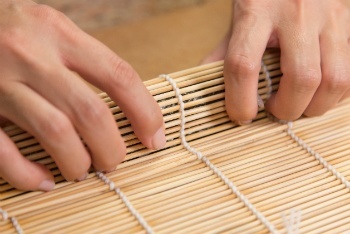
To Serve
- To cut a sushi roll, wet your knife with a damp towel and cut the roll in half first. You should “push, then pull” the knife while cutting through the sushi. Wet the knife again and cut each half roll into 3 pieces. Serve with soy sauce, wasabi, and sushi ginger (gari). Enjoy!

To Store
- Sushi rolls are best consumed right away, but you can stored in the refrigerator for up to 24 hours. I highly recommend keeping them in an airtight container or a plate wrapped tightly with plastic, and then wrapping the container/plate with a thick kitchen towel so the food stays safe in a cool environment but the rice doesn't get hard from the cold air in the refrigerator.
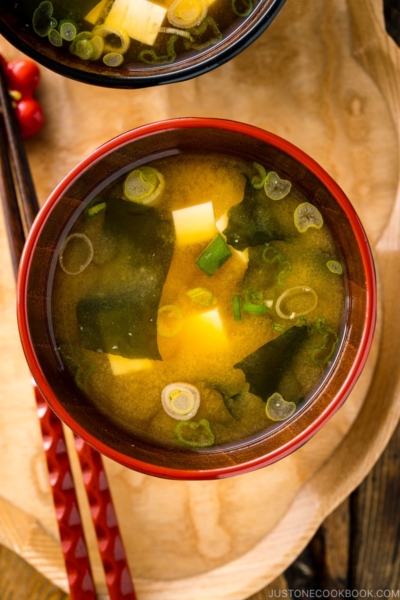
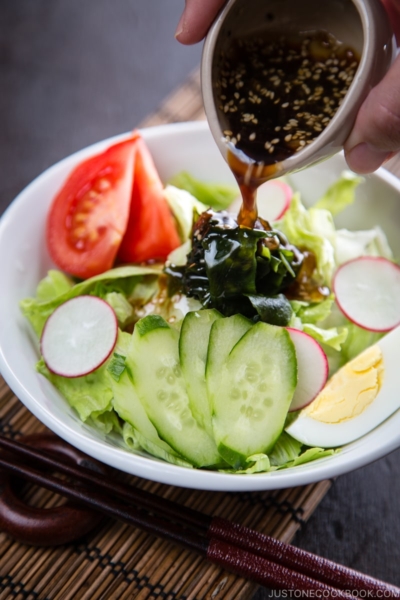
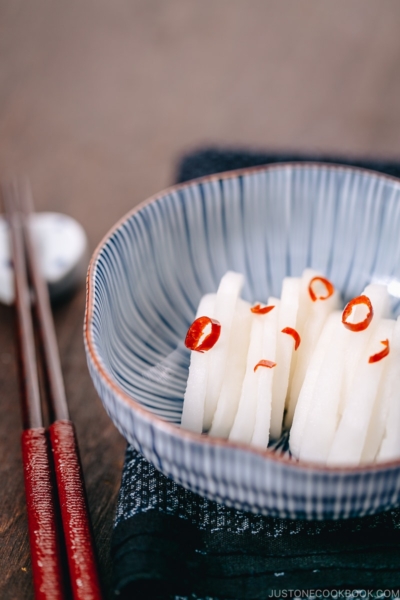




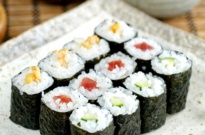
Hi Nami, could you share a recipe for home-made natto? I miss it so much when I’m not in Japan. Tnere’s only one brand of natto on sale here where I live, and it’s crazy expensive.
Hi Anna! Thank you for your request!
Nami is working on the Natto recipe. We hope we can share it sometime soon. 🤗
Hi Namiko,
l really enjoyed all those tips about Japanese cooking. The way of cooking the rice I loved it. Sushi are my favourite and thank you for showing it.
Hi Jennifer! Thank you very much for reading Nami’s post and trying her recipes!
Nami and all of us at JOC are so glad to hear that you’ve been enjoying the recipes and everything else that we share. It means so much to us.💞
Wow really amazing mam i am also a sushi chef
Hi Rahul, Awesome! Thank you for your kind feedback!
I’m making sushi for a party next week and was wondering if you can make sushi the morning of and then store it in the fridge? Will it still taste fresh? Any tips would be appreciated! (I’m now officially addicted to this website and I’m so excited about finding your Okonomiyaki recipe)
Hi Danielle! Rice gets hard in the refrigerator. It’s just the thing that we can’t avoid. So my trick is to wrap around the sushi with a thick kitchen towel and keep the sushi “cool” enough to be safe but not cold for rice. This is my method to keep my leftover sushi rolls for the next day. The rice loses the fluffiness but at least it’s not hard rice. 🙂
The recipe looks great. I am hoping you can clarify a couple points before I try making a batch for a large group. You mention that each roll requires 1/2 cup (US?) of cooked rice. 10 rolls x 1/2 cup of rice means that you should have 5 cups of cooked rice. 2 rice cooker cups of uncooked rice doesn’t seem like enough to give you this amount.
I was also helping you could confirm that 10 rolls = approx. 60 pieces.
Thank you for your time and attention!
Hi Chris! First of all, this is Hosomaki – classic thin sushi roll (as shown in the picture). To make one roll, you will need a scant 1/2 US cup of steamed and seasoned rice (scant, so it means between 1/3 and 1/2 cup). You can roughly make 9-10 rolls with 4 cups cooked rice (2 cups uncooked rice). And each roll, you will cut into 6. So if you make 10 rolls, yes 60 pieces.
Hope that helps!
One of the best detailed instruction & recipe I have found from the web about Japanese food. I am a huge fan of Japanese traditional foods and feels like will become a big fan of you soon 🙂 thx for great info! Nami sang
Hi Kyle! Thank you so much for your kind feedback! Hope you enjoy cooking my recipes! 🙂